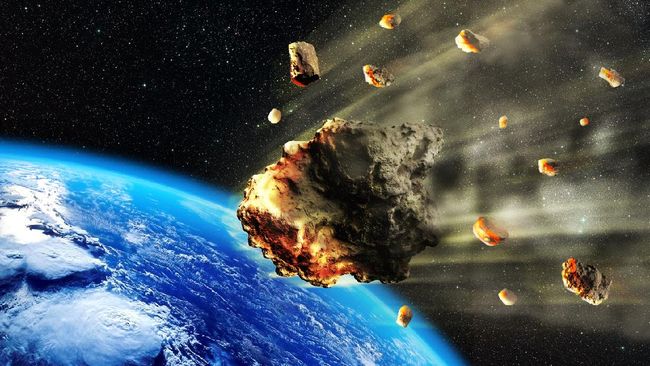CNN Indonesia
Monday, 12 Jun 2023 07:27 WIB
Jakarta, CNNIndonesia —
A theory mentioned the possibility of life in Earth come from another planet. Check out the following explanation.
The popular hypothesis of planetary scientists that life or living organisms can move between planets is Panspermia. The conjecture is that life did not originate on Earth, but from elsewhere in the universe (eg, Mars).
This is because the planets and moons were showered with meteorites when the Solar System was young, sending a lot of matter into space.
Meteorites made from Martian rock are occasionally found on Earth to this day, so it’s plausible that simple life forms like yeast or bacteria could have been carried up by them.
A study presented at European Planetary Science Congress at UCL in 2013 tried to explore this hypothesis. The research tried to answer whether simple organisms could survive the bumps and crashes if they were carried by meteorites.
University of Kent researcher Dina Pasini used frozen samples of Nannochloropsis oculata, a single-celled ocean-dwelling algae, to test the conditions that ancient life would need to survive if it did travel through space.
Using a two-stage light gas gun, which can accelerate objects to enormous speeds, Pasini shot frozen Nannochloropsis pellets into the water, and tested samples to see if any survived.
“As you might expect, increasing the impact velocity did increase the proportion of algae that died. But even at 6.93 kilometers per second, a fraction survived. This kind of impact speed is the speed you’d expect if a meteorite hit an Earth-like planet, “Pasini explained, quoted from Science Daily.
Apart from surviving freezing and crashing, as experienced when rocks were ejected from planets or crashing into them, there is good reason to think that the other problems faced by panspermia are also insurmountable.
Ice and rock can provide some protection against radiation, especially if organisms are embedded in them. Furthermore, the heating caused by ingress into the atmosphere couldn’t possibly heat something on the inside.
Heating due to atmospheric friction would only produce a thin layer around the outside of the rock, forming what is known as a ‘fusion crust’.
This research shows that panspermia, although not proven, is not impossible.
“Our research raises several questions,” Pasini said.
“If we find life on another planet, is it really alien or is it still something to do with us? And if so, did it give birth to us or did we give birth to it? We can’t answer these questions right now, but these questions not as far-fetched as one might expect,” he concluded.
(lom/lth)
2023-06-12 00:27:05
#Life #Earth #Planet


